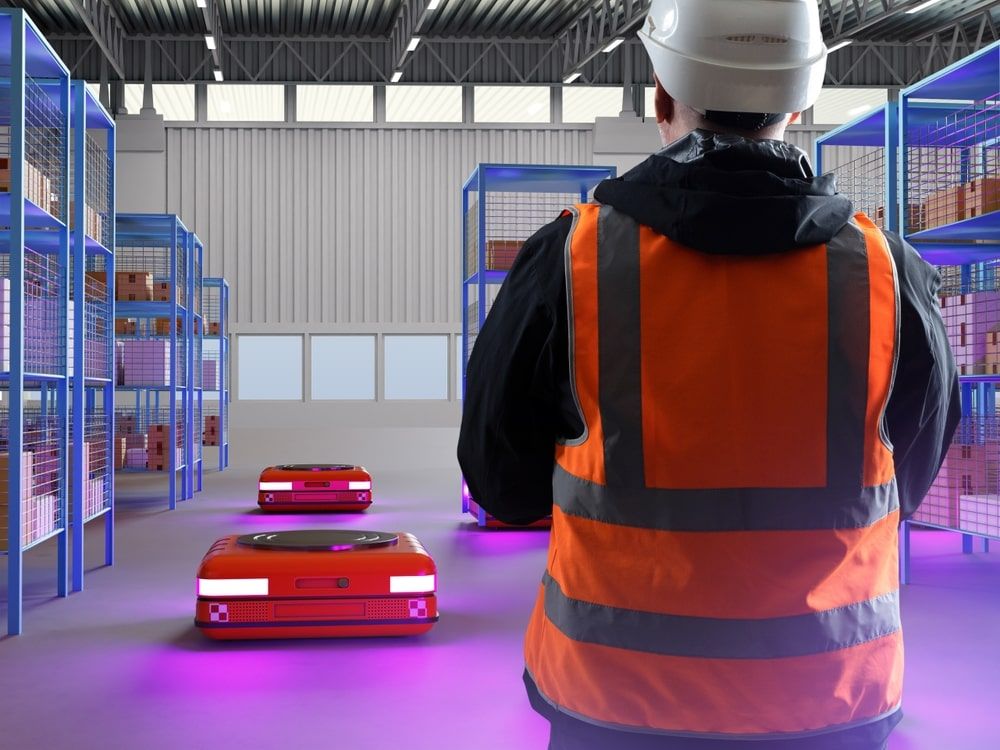Since the global COVID-19 pandemic induced by the SARS-CoV-2 coronavirus began, standard surface disinfectants have been well under pressure. It has also pushed organizations and businesses to produce innovative UV-disinfection robots. These robots are being marketed more and more as a simple method for quickly disinfecting all surfaces in rooms and other areas.
Due to their efficiency and apparent cost advantages of replacing cleaning labor, hospital management considers them intriguing. Ultraviolet disinfection maintains people’s health, which is a fascinating robotics application. Learn about the use of omnidirectional 3D vision systems for UV-C disinfection robots.
Technology and Equipment Descriptions
Robots are machines that humans have programmed to carry out tasks and move independently across space and time. The most-used technology focuses on surface disinfection using ultraviolet (UV)-C light. The non-touch technique that all UV-disinfection robots use offers excellent disinfection by killing germs through irradiation while preventing the physical removal of dirt or biological fluids which contain bacteria and viruses.
UV-C, which has a wavelength of 254 nanometers, has antibacterial, anti-sporicidal, antifungal, and antiviral properties. In-vitro environments, UV-C disinfection devices effectively reduce microbial contamination. The same has been demonstrated in practice for ambulances, patient rooms, and microbial contamination in operating theaters. The initial inoculation, soiling, applied energy, and exposure period all influence effectiveness. These elements differ according to the type of microbe and, in the case of bacteria, whether the organism is vegetative or in the spore stage.
How DreamVu UV-C disinfection robots stand out
UV-C robotic disinfection is a very efficient method that makes it necessary to identify people’s presence so that UV-C lighting won’t be harmful. An omnidirectional 3D vision system is ideally suited to meet this need because it provides the added benefit of locating the individuals in 360 ° and items that need cleaning. The automated guided vehicles, remote teleoperated vehicles, and autonomous mobile robots benefit from 3D vision systems with exceptional fields of view to increase mobility.
DreamVu’s cameras and vision intelligence software produce vision-based mobility solutions that are inexpensive and simple to use by seeing obstacles, delivering extremely accurate depth information, and building exact maps. Our omnidirectional 3D vision systems may easily find and detect the presence of people in the disinfection area. To maximize the advantages of omnidirectional 3D vision, the software is created. When the system recognizes a person as too close to the robot using depth-based zoning, it turns the UV-C lights off.
We fix the UV-C disinfection robots’ core vision problem and provide the following advantages:
- Effectiveness of people detection and disinfection,
- Detection of any individual in a broad space while minimizing false positives,
- Establishment of safety perimeters based on the distance from UV-C lights,
- Identification of the items that need to be cleaned and evaluation of their effectiveness based on the time and distance
- Addition of ODOA and SLAM capabilities to omnidirectional 3D vision systems currently in place.
Benefits of UV-C robotics
When typical surface disinfectants are in short supply, UV-C can be a useful substitute because of its well-established antibacterial properties. Manual cleaning and disinfection may vary because its effectiveness mainly relies on people and their intention, and figuring this out requires direct on-site examination.
Despite implementing the best practices, manual cleaning in each hospital depends on local protocols, training, comprehension, staff renewal and turnover, management and inspection of their performance, and local protocols for training, understanding, and renewal of cleaning personnel. A few advantages of autonomous mobile robots equipped with an Omnidirectional 3D Vision System are listed below.
Robotic disinfection eliminates the requirement for continuous human presence at the disinfection site by operating in an unmanned and standardized manner. As a result, it is possible to prevent exposing medical personnel to dangerous UV radiation while the treatment is underway.
After manual cleaning and disinfection, applying UV-C as a final disinfection step offers an additional hygiene benefit to lower cross-transmission and healthcare-related diseases.
UV light disinfection is an environmentally friendly procedure because it leaves no leftovers.With repeatable and documented disinfection results, automated disinfection might make it possible to validate the disinfection procedure.
For surface decontamination in hospitals, disinfection robots are a promising tool that could become even more effective in the future. Automated guided vehicle robots will offer verified, repeatable, and documented disinfection procedures. To get through the current obstacles and find ways to incorporate this unique technology into hospitals now and in the future, more technical advancements, and clinical trials in a range of hospitals are required.
DreamVu is a known innovator and market leader in omnidirectional 3D vision systems. We build omnidirectional 3D vision systems using patented optics and visual imaging software to tackle some of the most difficult vision issues. We are impressively utilizing our robots skills. Want to learn more about how DreamVu’s technology can change the way your robotics solution works? Participate in a free, one-hour workshop on stereo vision with our specialists.






